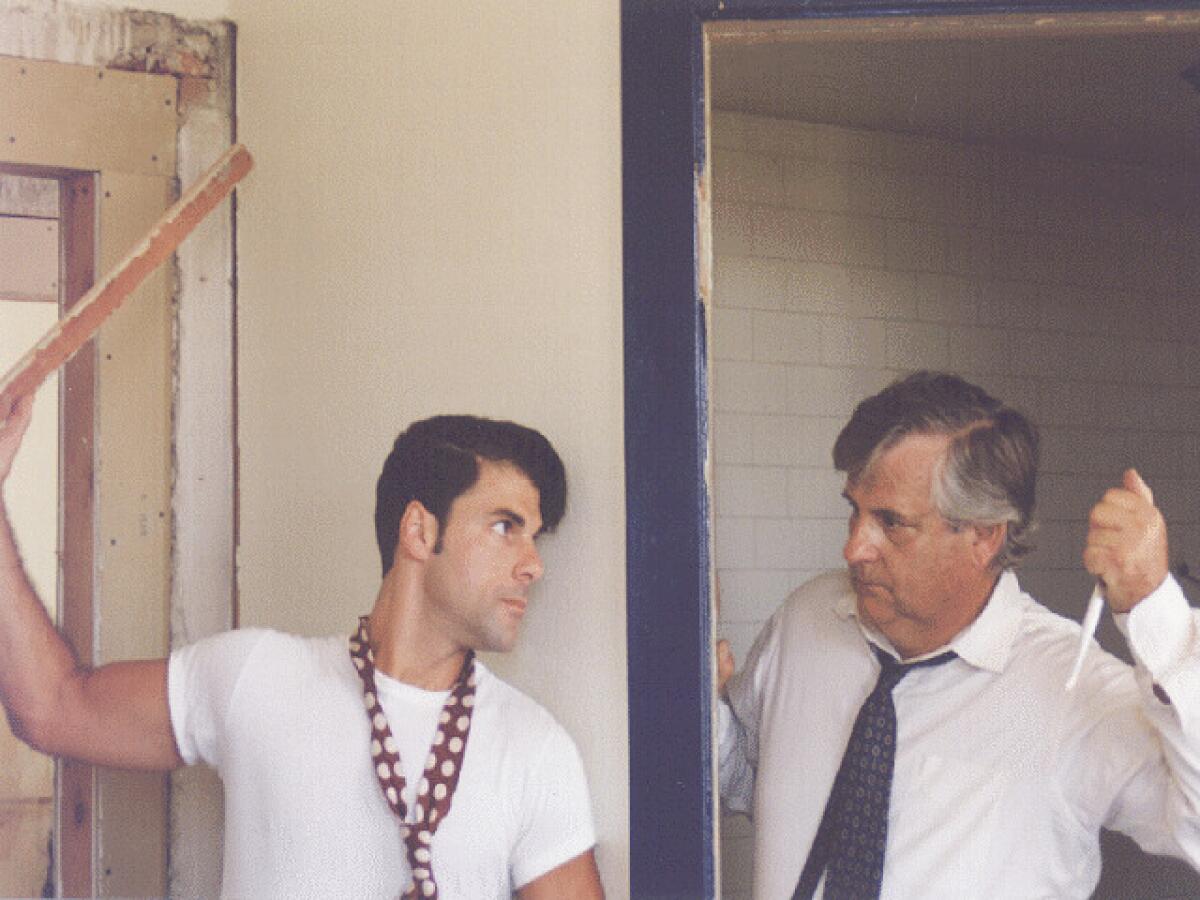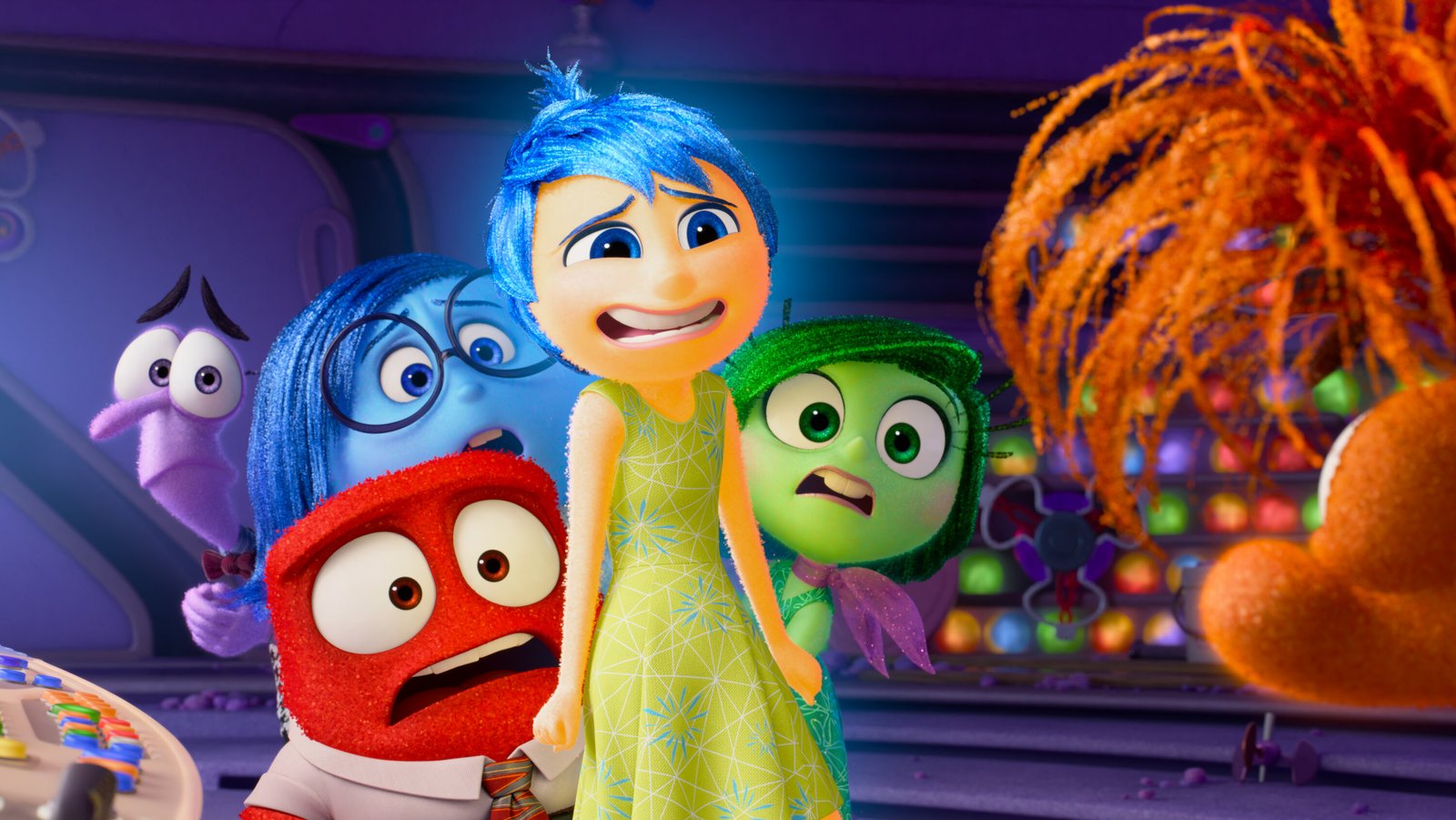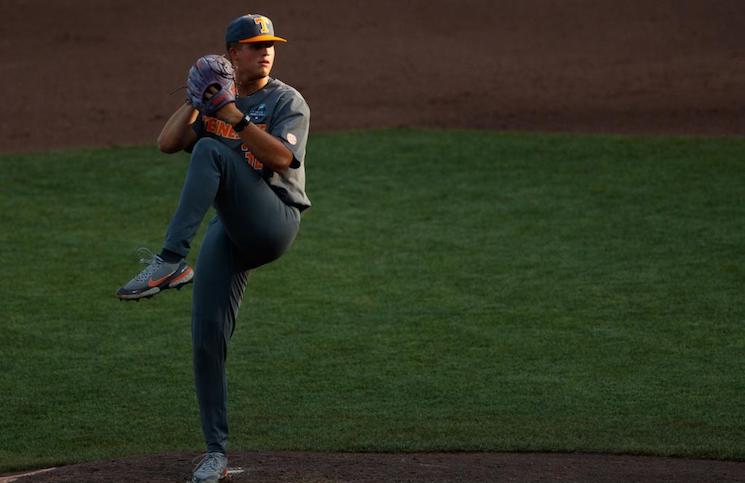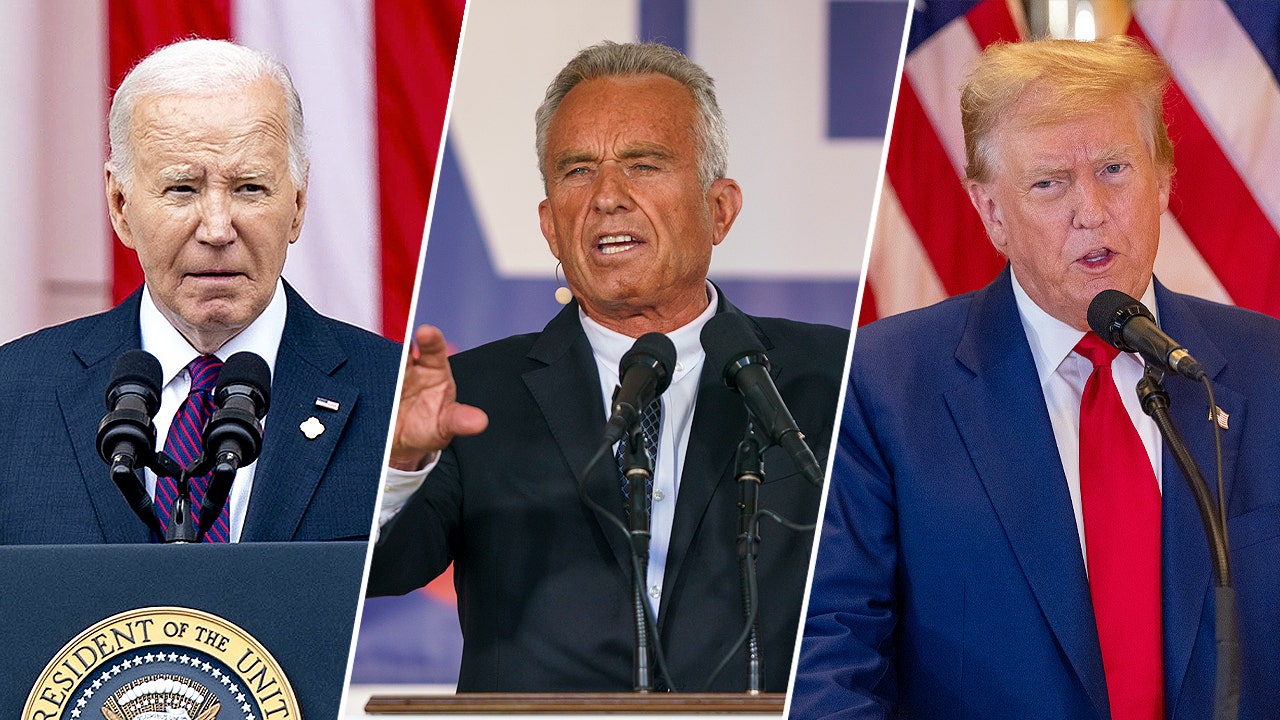Entertainment
The worst video game ever made is back. But why?

From the arcades to the handhelds, mobile phones to home consoles, absolutely nothing could prepare the video game world for the unrivaled experience that is 1993’s “Plumbers Don’t Wear Ties” — a critically maligned game which, after a quiet rerelease last spring, is now getting a special edition rerelease on the long-defunct ’90s video game system Panasonic 3DO.
For the uninitiated, “Plumbers Don’t Wear Ties” was released as an “interactive romantic comedy” game meant for adults where, in a series of images with PowerPoint pacing, the player has to make “Choose Your Own Adventure”-style choices to help John, a struggling plumber on a bike, successfully woo Jane, a woman he meets in a parking lot as she’s en route to a job interview. What follows is a tale of corruption, Los Angeles action, narrator murder and a happily ever after — with plenty of raunchy ’90s shock humor along the way.
Released independently for the Windows PC and Panasonic’s aforementioned, relatively short-lived 3DO home console at a time before there were industry-wide ratings on games, this adults-only experience may have buried seeds in the minds of ’90s video game magazine readers, who perhaps encountered the scathing reviews in the July 1994 issue of PC Gamer (which gave the game a 3 out of 100 score and called it “the nadir of entertainment”), or who were vaguely intrigued by the title being the only video game for sale in the back-of-the-magazine catalogs with an “18+ only” warning.
While this style/genre of video game was known and embraced in Japan at this time as “visual novels,” the Americans behind “Plumbers” were unaware, and came to the same format through parallel thought. According to the Good Bad Flicks documentary on the game, which is included with the game’s new “Definitive Edition” release, “Plumbers” is the brainchild of Michael Anderson, who in the ’70s and ’80s was a pioneer in early forms of the internet and digital mapping. After he sold his digital mapping company in the ’80s, the lucrative buyout gave Anderson the time and money to — as he put it —“get into trouble.” This was a time where there was interest in “interactive movies,” and given the thrills he found at previous bleeding edges of technology, he explored what it would take to give a cost-effective romantic comedy audience-dictated movie experience a go.
Since full-motion video games weren’t quite at the crisp visual quality for home consoles with modern CD-ROM limitations, Anderson approached making the game as a frame-by-frame experiment. He’d approach potential actors in person, including Jeanne Basone — a face familiar to wrestling fans as “Hollywood” from the original “GLOW: Gorgeous Ladies of Wrestling.”
Basone told The Times that filming was “like shooting a movie you shoot out of sequence, so honestly, if you’ve ever been on a set you understand, you just need to trust your producer and director and that’s just what we did. Plus we had a whole lotta fun shooting it and being on location.” While the guerrilla-style filmmaking around Los Angeles landmarks may have not quite translated the on-set fun to players in 1994, it does look like they were having a blast at time time, perhaps giving the game a bit more charm 30 years later.
That charm is something the Limited Run Games team behind “Plumbers Don’t Wear Ties: Definitive Edition” hoped to maximize while fashioning the game’s resurrection. LRG co-founder and CEO Josh Fairhurst went through the effort to not only track down the “Plumbers” rights holder, but purchase the IP to help make it happen.
“As one of the worst games of all time, we wanted to explore what led to its existence and why it is important,” Fairhurst told The Times, adding “I always value being as authentic as possible to the original experience. With ‘Plumbers Don’t Wear Ties: Definitive Edition,’ we did our best to not mess with the core game. It’s supposed to be bad, so we didn’t want to try and make it good. I felt like that would miss the point. Instead, we faithfully cleaned up and restored the game’s images, did our best to repair the audio without overriding the tinny low-budget charm, and surrounded the game with documentary footage, commentary, and extra features that do their best to contextualize it.”
The restorers of “Plumbers Don’t Wear Ties” had a philosophy: “It’s supposed to be bad, so we didn’t want to try and make it good.”
(Courtesy of Limited Run Games)
One of the new “Definitive Edition” producer/developers Joe Modzeleski felt a full range of emotions in the early stages of development. He told The Times, “It was funny … but it wasn’t long after that, the thoughts started to be, ‘Oh, this is going to be difficult’ because there is nothing compelling to sell here and we have to make a profit.”
Compared to Limited Run Games’ previous remastered ’90s video game cult classics like the controversial “Night Trap” and “Corpse Killer,” this wasn’t a game that could be sold on gameplay. Fellow producer/developer Audi Sorlie also told The Times there was a real ground-up challenge in bringing back “Plumbers” with its proper elements as well. “Nothing really survived of this stuff. It was a weird throwaway project in the ’90s. No one is going to keep any of that. This is a problem throughout the entire video game industry, most of the stuff that was done prior to 2005 didn’t get archived so it’s hard for any project to nail down this stuff. And for ‘Plumbers’ even more so as this was this small project in California.”
Sorlie had to work on the game’s extensive trained AI upscaling, an undertaking that involved taking the game’s 890 images, all 640 x 480 indexed at 256 colors, and bring them to 4K quality — of which the reading and rebuilding combined took a year of compositing and by-hand touch-ups.
So, why put all this effort into something seemingly every video game player would consider objectively bad? Perhaps it’s the fan base, of whom the vast majority likely hasn’t pushed a single button on a “Plumbers” menu before this year. Yes, there’s a “Plumbers Don’t Wear Ties” following, largely thanks to the second life the game has had as an internet meme. In the summer of 2009, longtime YouTube personality James Rolfe dedicated an episode of his series “Angry Video Game Nerd” to “Plumbers Don’t Wear Ties,” giving perhaps the first widespread video capture of its gameplay and trademark sleazy absurdity to the world.
Instantly becoming one of his most popular episodes, today his 2011 upload has over 9 million views and has spawned numerous other reviews and revisitations across all corners of the so-bad-it’s-good video game fandom. A factory-sealed copy of the original 3DO game sold on eBay last year for $600. The one known existing copy of the PC version was tracked down at Ball State University in 2017, and its subsequent software upload to the internet is considered a triumph of lost media discovery.
Whether you consider the prospective players “fans” or just curious, there’s a proven legacy of “Plumbers” whose presence, whether as an intriguing of-its-time experiment or just the absolute worst of the worst, can have a strong argument for preservation.
Fairhurst describes the need for it as, “We frequently get remasters and rereleases of the best games of all time, but rarely does anyone spend their time and resources on the worst. As odd as this seems to say, I think the worst games of all time are just as historically significant as the best. We should be researching these and examining why they were bad, what made them exist, and how they were received culturally,” adding “I think people will always remember ‘Plumbers Don’t Wear Ties’ and want to experience it in the same way film enthusiasts still view and discuss ‘Plan 9 From Outer Space.’ Bad games draw our curiosity and I think there’s something to that. It’s been an honor to get to bring this game back, and I hope that people enjoy getting to experience it.”

The CEO of Limited Run Games, which is behind the rerelease, says, “I think the worst games of all time are just as historically significant as the best.”
(Courtesy of Limited Run Games)
This new experience is giving “Plumbers” its biggest public boost ever. To promote the game’s release, Basone appeared at Boston gaming convention PAX East to meet the legions of old and new “Plumbers” fans. Basone told The Times, “I couldn’t wait to dive back in and make something that was being updated for what I thought was lost long ago, and will be on all game platforms today. I am proud of everybody who worked on it in 1993, and so happy Limited Run Games decided to release this updated version.” Given that LRG now owns the Plumbers IP, the question of a possible sequel seems more possible now than ever. However, when asked, Modzeleski laughed and said “Well, yeah, but don’t encourage that!” with Sorlie adding “Have you played this game?”

Movie Reviews
“Inside Out 2” is Good, but is that Good Enough? (Movie Review)

When it was released in 2015, Pete Docter’s “Inside Out” was a seminal moment for Pixar. Coming on the heels of a pair of films that didn’t connect with audiences or critics in the same way that much of the studio’s earlier work had (2012’s “Brave” and 2013’s “Monsters University”), “Inside Out” saw Pixar out to prove they still had it. And as it turned out, they absolutely did.
After some decidedly unflattering discourse discussing the studio’s new penchant for favoring sequels and prequels over original material, “Inside Out” was an original film that hit every possible benchmark for success: it became one of the best-reviewed films Pixar had ever made, grossed just shy of a billion dollars, and won an Oscar. “Inside Out” is a truly stunning film, one that builds upon a bedrock of remarkably nuanced emotional intelligence to deliver an animated feature just as engaging philosophically as it is as a piece of entertainment.
Now, in 2024, Pixar is in a very different position. Despite the fact that the overwhelming majority of Pixar’s recent output has been incredibly well-received original films, these films have not been released in theaters. This is partially due to COVID-related lockdowns and partially due to Disney’s insistence on betting every chip possible on their streaming service, Disney+. As a result, films like “Soul,” “Luca,” and “Turning Red” (all of which are absolutely wonderful and unique works that deserve to be acknowledged as modern classics within the Pixar oeuvre) were not released in theaters and in their place, the aggressively lackluster films “Lightyear” and “Elemental” were. Thus, Pixar has been pushed back into a very similar corner, one in which their artistic and commercial viability has been questioned from every side, including parent-company Disney most of all.
So Kelsey Mann’s “Inside Out 2” finds itself being released to a scrutinizing media environment, trying to hit every possible quadrant for success once more, just like its predecessor. But does “Inside Out 2” have what it takes to live up to the critical, commercial, and cultural juggernaut that was the first film?
5. Weak Spot: Commodity Over Character
One of the first things to strike this writer as strange in the lead-up to “Inside Out 2” was the lack of returning creatives, both in front of and behind the digital camera. While Amy Poehler is back, as are several others, there are numerous highly notable absences that one does not typically see in Pixar sequels. Neither Bill Hader nor Mindy Kaling have returned to their roles of Fear or Disgust, respectively, and even composer Michael Giacchino, whose score for the first film has become so indelibly ingrained in the minds and memories of audiences, is woefully missing here.
This is all strange, given the lengths Pixar has gone to actively preserve these kinds of creative teams in the past. All four Toy Story films have kept the core voice cast involved as much as possible, and you don’t see Randy Newman not returning to score one of those sequels. In and of itself, this observation is not a problem, but it’s indicative of a larger systemic issue. “Inside Out” was a film about characters, and “Inside Out 2” flattens those characters into commodities in practically every way.
Part of this has to do with the sheer number of characters in “Inside Out 2.” By introducing four new Emotions to the cast, “Inside Out 2” is a far more crowded film, one that feels ultimately unable to devote worthwhile time to properly defining or developing its characters.
As an easy example, in “Inside Out,” Bill Hader as Fear felt like a real character. We spent meaningful time with him, both with the rest of the Emotions and in solidarity, and came to understand his role within Riley’s emotional state on many levels. In “Inside Out 2,” Fear is a caricature of Hader’s original performance. New voice actor Tony Hale does a great job, but the character himself is defined by the broadest strokes imaginable here, and it’s to the overall detriment of the character and the film. In juggling so many more characters and moving pieces, “Inside Out 2” loses the stark clarity, focus, and impact of the first film and muddies the central metaphor at the series’ core.
4. Maya Hawke as Anxiety
The one new emotion who truly shines in “Inside Out 2” is Anxiety, voiced delightfully by Maya Hawke.
Without delving too deeply into specifics to preserve some of the film’s later surprises, Anxiety’s role in the story stands out as a highlight where the emotional intelligence of “Inside Out 2” matches that of the first film. The portrayal of Anxiety manages to convey with genuine subtlety and nuance the ways in which anxiety can impact someone, especially during adolescence.
Maya Hawke’s vocal performance is exceptional, effectively capturing the complexities of Anxiety’s motivations. Supported by the strong writing of the character in Meg LeFauve & Dave Holstein’s script and stunning animation, Anxiety emerges as one of the most skillfully crafted and impactful elements of “Inside Out 2.”
3. Weak Spot: Maintaining the Status Quo
There are several instances throughout the runtime of “Inside Out 2” where it feels like the filmmakers are yearning to break free from the confines of delivering ‘another Inside Out’ and instead offer something beyond that preconceived notion. Throughout the film, concepts such as Riley driving herself without the influence of any Emotions, delving into the emotions that constitute the Emotions themselves, and exploring how one’s primary emotions evolve over time are all hinted at. However, disappointingly, none of these ideas are explored with any real depth.
Instead, “Inside Out 2” appears determined to cling to the status quo established by its predecessor, often to its own detriment. While these ideas suggest potential avenues for a transformative story involving Riley and her emotions, the film fails to fully realize any of them. Instead, the overarching theme of the film feels like a slight variation on the deeper theme of the first film. Similarly, the narrative of “Inside Out 2” feels deliberately reminiscent of its predecessor, lacking the imagination in staging, settings, or character development that made the original so memorable.
2. Weak Spot: A Lack of Imagination
The first “Inside Out” feels bursting with creativity, imagination, and monumental stakes. While the external story is simply about Riley and her family moving to a new city and her contemplating running away from home, the narrative feels almost mythic due to the meticulous interweaving of a propulsive narrative and profound themes by Docter and his team.
In contrast, “Inside Out 2” often feels oddly insular and small-scale in the wrong ways. While using a weekend away at hockey camp as the narrative’s core is not a bad idea, as it serves as a microcosm of Riley’s impending adolescence, the film fails to emotionally convey the magnitude of this event as effectively as it does intellectually.
This is exacerbated by an in-brain adventure for the Emotions that feels more like a straightforward task than the grand odyssey of the first film. While the first film also revolved around retrieving a MacGuffin, it did so to facilitate character growth and thematic exploration. In “Inside Out 2,” this narrative structure remains, but the essential components feel far more scarce and less impactful.
1. The Vault
The true standout scene of “Inside Out 2” revolves around a vault within Riley’s head dedicated to safeguarding her secrets. Within this vault lies a plethora of hilariously clever gags, including a recurring one that parents of very young children will undoubtedly find immensely enjoyable. What sets this sequence apart is its utilization of a mixed-media style of animation, which deviates from Pixar’s typical aesthetic in unexpected ways, enhancing the scene’s impact. There’s a genuine exuberance and innovative energy to this moment, which the film could have benefited from incorporating more extensively.
(B-)
“Inside Out 2” is a very well-made film. It’s funny, charming, and compelling, but it doesn’t quite reach the same level of humor, charm, and emotional resonance as the first “Inside Out” film. While it represents an improvement over Pixar’s previous theatrical releases, “Lightyear” and “Elemental,” it falls short of the artistic fulfillment and singular vision found in recent works like “Soul” by Pete Docter and Kemp Powers, “Luca” by Enrico Casarosa, and “Turning Red” by Domee Shi.
Although “Inside Out 2” isn’t a disaster, it feels like a movie that prioritizes mass appeal and accessibility over passionate storytelling and creative vision at every turn.
Entertainment
Traffic alert: Biden, Obama will appear at downtown L.A. fundraiser Saturday evening

President Biden arrived in Los Angeles early Saturday for a star-studded fundraiser expected to break records by bringing in more than $28 million from thousands of supporters. But many more Angelenos are likely to be affected by the presidential visit — because of traffic.
The gathering — featuring former President Obama, actors George Clooney and Julia Roberts and other celebrities — is scheduled to take place Saturday evening at the Peacock Theater in downtown Los Angeles. At least one protest is planned outside.
Roads and street parking in the area, including the L.A. Live entertainment complex that is home to the theater, will be blocked at times, and heavy traffic is expected. Additionally, it’s unclear where Biden, First Lady Jill Biden and Obama will be staying during their time in Los Angeles, but freeway closures should be expected when their motorcades carom around town.
Los Angeles transportation and police officials referred questions about road closures to the U.S. Secret Service, which declined to provide details but warned of potential congestion.
“The U.S. Secret Service works closely with our local law enforcement partners to minimize disruptions to the public while ensuring the highest level of safety and security,” said Melissa McKenzie, a spokesperson for the Secret Service. “For security reasons, we are unable to release specific motorcade routes in advance, but the public can expect intermittent road closures and parking restrictions as part of the visit.”
A spokesperson for the Los Angeles Department of Transportation was more blunt.
“Travelers should anticipate delays in the downtown area and plan accordingly,” said spokesperson Colin M. Sweeney.
The Federal Aviation Administration has restricted airspace for “VIP Movement” over a swath of the region from 4:45 a.m. Saturday to 3 p.m. Sunday for pilots who are not flying presidential, passenger, cargo, military, law enforcement or air-ambulance aircraft.
Traffic jams prompted by presidential visits are not surprising given the enormous security resources needed to protect the leader of the free world, particularly when he is not in a secure site such as the White House or an event space that has been thoroughly prescreened.
But in Los Angeles, the ensuing traffic jams are also legendary. They were so bad during Obama’s tenure that the phrases “Obamajam” and “Obamageddon” became part of the local vernacular.
“Mr. President, I elected you to be in the White House, not on the 405,” one commentator wrote on Twitter during a 2012 Obama visit to Los Angeles for a fundraiser at George Clooney’s Studio City house. “There are times other than rush hour during which you can visit L.A.”
Obama’s handlers clearly learned from such experiences, increasingly using helicopters to ferry the president around the city to reduce road and highway closures.
Biden has also created traffic jams when he has visited the region, such as when parts of the 405 Freeway were shut down during a weeknight rush hour so the president could travel from Century City to media mogul Haim Saban’s sprawling Beverly Park estate for a fundraiser in February.
Movie Reviews
'Inside Out 2' movie review: Featuring the feels, their feats and then some

Nearly 10 years after the first instalment, out of the classic Pixar-Disney partnership, comes a peek into the life of a teenage Riley in the sequel to Inside Out. Much like its predecessor, the movie is intense, uplifting and, understandably, emotional.
The introduction of new characters — emotions and beyond — succeeds in keeping the audience guessing. True to form, the script and animation hold several inside jokes and lean heavily on wordplay. Amidst the dry, chuckle-drawing humour, the writers have also managed to pepper in more complex concepts. This imagery is likely to stick with you after the viewing, drawing reflections from the outside in, ironically.
Even in the innovation and progressing timeline, there is definitely a sense of familiarity. Characters navigate the mind landscape, and make an arduous journey with obstacle after obstacle, which sometimes does seem to drag on.
The voice cast powers this delicate script forward with noticeable nuance, despite some replacements and additions. Amy Poehler continues to be a convincing (and this time, a more likeable) Joy, while Maya Hawke’s Anxiety carries a nervous and excited energy central to the story.
The actors also manage to keep pace with the development of their characters into more multi-dimensional personalities. For those who enjoyed, related to and fondly remember the characters from the first film, the second offers great story arcs to love, alongside new fun introductions.
While Pixar’s bright, lively animation will work great to keep younger audiences entertained, depictions of mental health — particularly a panic attack — might warrant a conversation, context and maybe some reassurance for kids and teens. For older audiences, the movie can come off like one long session of therapy — loads of self-reflection, uncertainty, tears, awareness and hopefully, acceptance.
The story peels back the layers of the confusion, hopefulness and embarrassment of the teen years in a way that feels uncomfortable at times, and profound at others.
In all, Inside Out 2, holds tears, laughs and a slew of, “Oh, I see what you did there”. While it isn’t the most gripping watch throughout, it is thoughtful and sweet, making the film a lovely choice for a quiet day with family or friends. My top tip is to make sure you stick around for the post-credits scene (there’s more than one)!
Published 15 June 2024, 09:56 IST
-

 News1 week ago
News1 week agoWoman handcuffed in police car hit by freight train reaches $8.5M settlement
-

 Movie Reviews1 week ago
Movie Reviews1 week agoStream It Or Skip It: ‘Under Paris’ on Netflix, a shark-in-the-Seine thriller that delivers the ludicrousness you crave
-

 World1 week ago
World1 week agoEconomy, migration: Voters' main concerns ahead of elections
-

 News1 week ago
News1 week agoIsrael used a U.S.-made bomb in a deadly U.N. school strike in Gaza
-

 Politics1 week ago
Politics1 week agoTrump campaign accelerates vetting of potential running mates
-

 Movie Reviews1 week ago
Movie Reviews1 week agoShort Film Review: Blue and White (2022) by Hiroyuki Nishiyama
-

 World1 week ago
World1 week agoWorld leaders, veterans mark D-Day’s 80th anniversary in France
-

 World1 week ago
World1 week agoFrance to provide Ukraine with its Mirage combat aircraft















